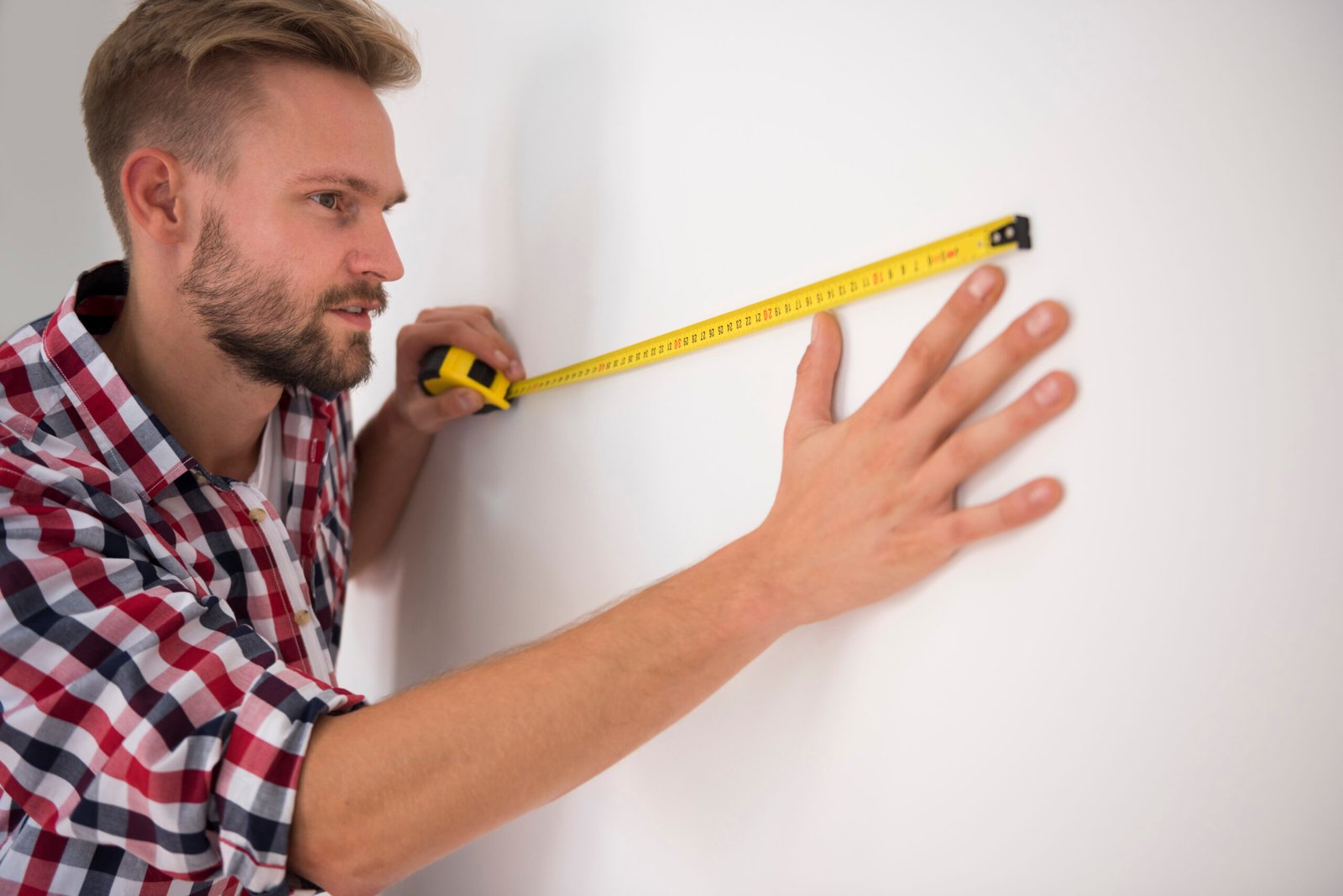Installing drywall can be a tricky task, especially if you’re aiming for a precise fit in a room with unique dimensions. A common pain point people face during drywall installation is getting the cuts just right. Miscalculations can lead to wasted materials and a poor finish, which can be frustrating and costly. But don’t worry—there’s a straightforward way to measure and cut drywall accurately. In this guide, we’ll give you the quick solution to get it right, plus detailed steps on how to perfect your drywall installation.
What is Drywall, and Why Accuracy?
Drywall, also referred to as gypsum board is an essential part of many interior walls in the modern home. It’s quite easier to handle, cut, and fix in different construction projects. Then even a small misjudgment in measuring can create issues such as misaligned seams, uneven surfaces, and wasted materials that is why it is important to get the right measuring and cutting on day one.
Drywall Measuring and Cutting Tools
Get every tool and item you need put together before starting work to make the process easier on you. Here’s what you’ll need:
- Measuring tape
- Utility knife
- T-square or straight-edge
- Drywall saw
- Pencil or chalk
- Drywall rasp (if you want to smooth rough edges)
The use of the correct tool determines whether you get a clean slice or a ragged edge. When fitting out any room with plumbing fixtures or water heater installations, a drywall saw is a great tool for punching cuts.
Measuring for Drywall — A Guide To Get Everything Perfect
1. Measure the Space
Measure where the drywall is going to be placed before cutting it. Measure the length and height of the wall using measuring tape. Measurements need to be taken accurately, including all the plumbing fixtures and electric outlets that drywall will have to bend around.
Tip: Double-check your measurements in order to avoid mistakes! Because drywall sheets are heavy and a bit expensive, it’s better to be safe than sorry.
2. Mark the Drywall
Place the drywall flat down on a work table. Use your sheet as a stencil to mark out the measurements on paper with pencil or chalk. The previous line drawing may help you position lines (use a T-square or another straight edge to mark your lines perfectly straight. This is particularly the case in areas where the drywall must precisely fit around windows, doors, and other fixtures.
3. These include all the plumbing and water heater installations.
If you installed any plumbing or water heaters take care to mark those fixture locations. You can create openings by well, using your drywall saw. Because plumbing fixtures are sensitive like faucets or water heaters they should be leveled accurately so your cuts should be pretty clean and level.
Best Way to Cut Drywall For A Flawless Fit →
1. Score the Drywall
After you have tagged your measurements, it is time to score the drywall. Cut along the lines you have traced using a utility knife. Make sure to cut through the paper but not into the drywall fully. It will provide you with a cut line to break the drywall about.
2. Snap the Drywall
Snap the drywall along that line by bending it over a line until it breaks cleanly. With any luck, the drywall will snap right at that line. And here, you{ll use the cutter to cut through the paper from the other side}
3. Trim and Smooth the Edges
Sheared drywall edges can be cleaned up with a drywall rasp after snapping the board. It is not too important for parts that need to be assembled together. When drywall is fastened together you want a good, but not too firm of a fit between the sheets — you don’t want them to be forced tightly together with each other because this will create gaps.
4. For jagged cuts, utilize a drywall saw
When you have irregular shapes, if you need to work around your plumbing fixtures or a water heater, then those perfect lines are difficult to achieve and in that case, the drywall saw will help you. Cutting Slowly But Steadily: In this manner. The technique to approach it is while cutting slowly as well as calmly which also helps to avoid any mistakes and ruining of the left-over place besides the drywall piece.
Installing the Cut Drywall
1. Dry Fit the Drywall
Dry fit the drywall to confirm it fits the wall studs. Trim edges or recut openings if necessary.
2. Secure the Drywall to Studs
After you are happy with how the drywall fits in place, attach it to the stud with drywall screws or nails. Space the screws 12 to 16 inches apart. A Note: Be careful you are not screwing too far in which case will cause your drywall to break.
3. Tape and Mud the Joints
When all the drywall is in, tape the joints and mud the smooth joint compound. Firstly, bring mud up on the center of the butt joint and use a drywall knife to flatten all your joints for a seamless finish. This process will hide all the seams and make the model surface ready, to paint or finish.
How to Get That Professional Finish
- Level: Use this before you fasten the drywall to ensure that all of your sheets are level and not going to create dialed walls.
- Pack Around Fixtures: Measure carefully and cut around plumbing or a water heater installation so that your fiberglass tub surrounds fit your needs.
- Sand smooth: After applying the joint compound, sand it smooth to achieve a professional finish.
Common Mistakes to Avoid
- Failing to measure twice: Even down to the measurement an error often means that money will go to waste.
- Hasty cutting: Chopping up pieces at too fast of a speed can lead to an uneven, jagged edge and poor fit around plumbing fixtures.
- Never Skip the Dry Fit: Always do a dry fit before hanging another sheet of drywall to make sure you don’t have to pull it off.
Conclusion: Perfect Drywall Fit Every Time
With this information, you learn how to cut and measure drywall for a perfect fit whenever starting a new installation. When working around plumbing fixtures or a water heater, as an example make sure that you are precise as this will become important in order that your drywall fits correctly. Follow the last 3 steps and you will get a perfect finish every time.







